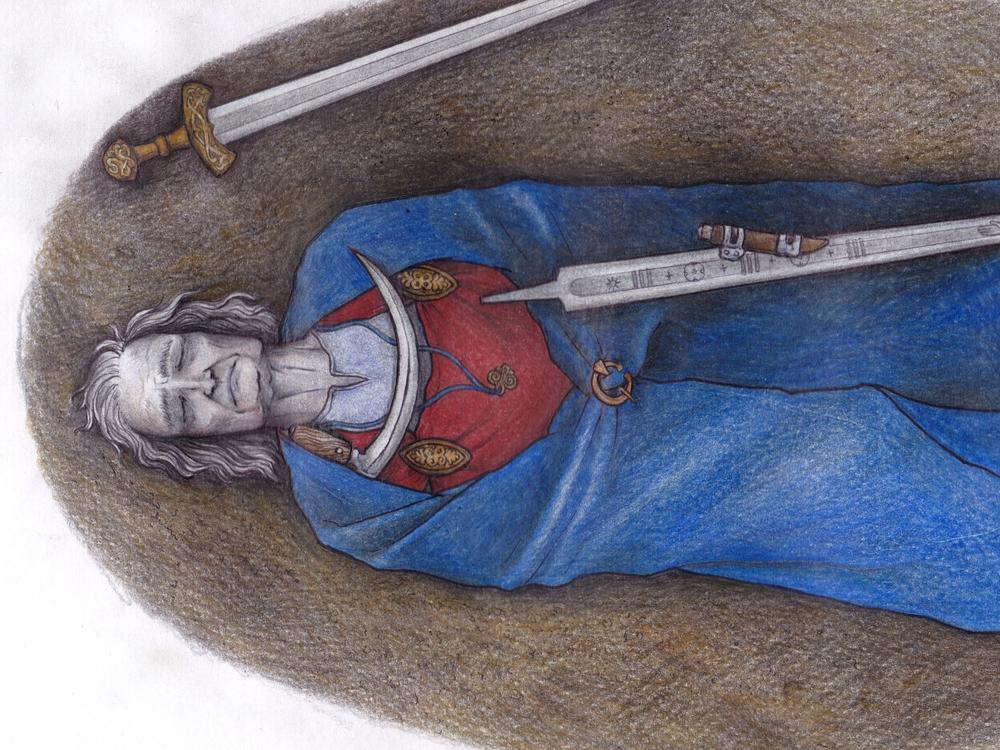Section Branding
Header Content
1,000-Year-Old Remains May Be Of A Highly Respected Nonbinary Warrior, Study Finds
Primary Content
Analysis of ancient DNA found in Finland has unveiled a surprise a century later – the remains of an early medieval warrior thought to be female may have been nonbinary.
The new findings challenge previous ideas about gender roles and expression and suggest that nonbinary people were valued and respected members of their communities, researchers concluded in their study, published in the peer-reviewed European Journal of Archaeology,
The findings are a reminder that "biology does not directly dictate a person's self-identity," said Ulla Moilanen, the study's lead author and an archaeologist at Finland's University of Turku.
Archaeologists first discovered the grave in 1968. Located in Suontaka Vesitorninmäki, southern Finland, the remains were buried alongside a sword and jewelry such as brooches and found in fragments of woolen clothes — which were "a typical feminine costume of the era," the researchers said.
But the use of DNA analysis decades later found chromosomes that didn't match what's expected for males or females. The researchers — based in Finland and Germany — concluded that the buried person likely had Klinefelter syndrome and was anatomically male.
Females are typically born with two X chromosomes (XX) and males are born with one X and one Y chromosome (XY). Males born with Klinefelter syndrome are born with an extra X chromosome (XXY), according to the United Kingdom's National Health Service.
The syndrome affects about 1 in 660 males. Those with Klinefelter may have low levels of testosterone, a smaller penis, undescended testes, enlarged breasts and infertility. Many people aren't diagnosed until they are older and test their fertility levels; others are never diagnosed.
In their findings, the researchers noted that the remains were "badly damaged" and that they only had a small sample to test. But through the use of modeling, they said they "found overwhelming evidence that the genetic data of the Suontaka individual most closely resemble an XXY karyotype."
The honorable way the warrior was buried led researchers to conclude that the remains were of "a respected person whose gender identity may well have been non-binary."
"If the characteristics of the Klinefelter syndrome have been evident on the person, they might not have been considered strictly a female or a male in the Early Middle Ages community," Moilanen said. "The abundant collection of objects buried in the grave is proof that the person was not only accepted but also valued and respected."
The new research indicates that even in an "ultra-masculine environment of early medieval Scandinavia" where men with "feminine social roles and [who] dressed in feminine clothing were disrespected and considered shameful," there may have been individuals who did not fit gender norms and were still admired, the researchers concluded.
Other archaeologists and historians not involved in these new findings told Livescience they found the work exciting, as it calls attention to conversations surrounding gender, bodies and identity.
"It is a well-researched study of an interesting burial," said Leszek Gardela, a researcher at the National Museum of Denmark. "It demonstrates that early medieval societies had very nuanced approaches to and understandings of gender identities."
Copyright 2021 NPR. To see more, visit https://www.npr.org.

